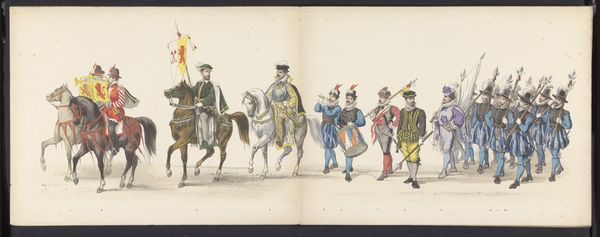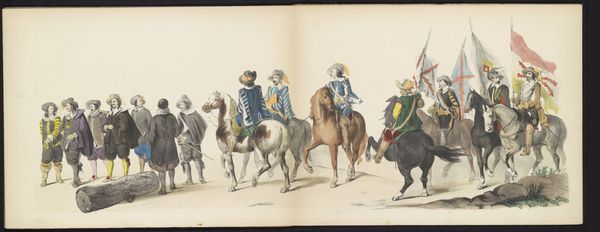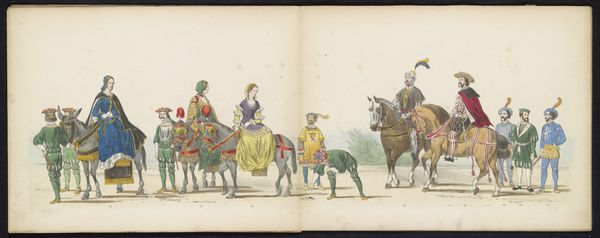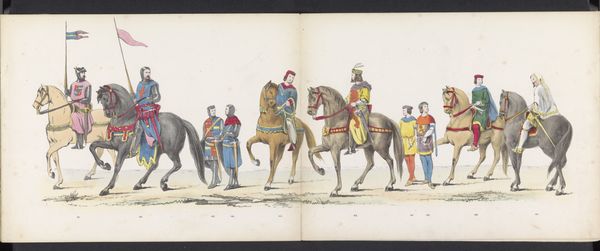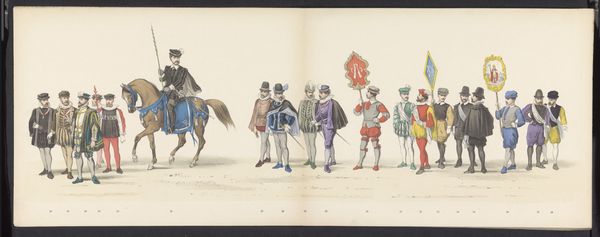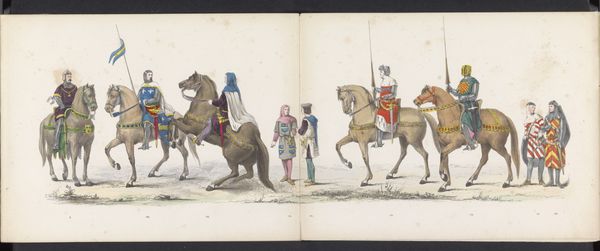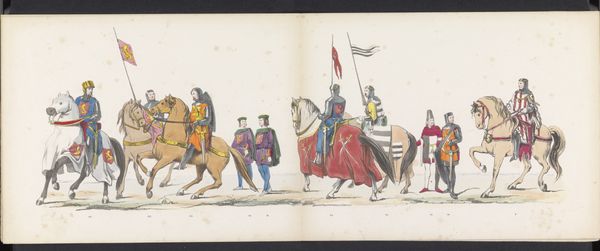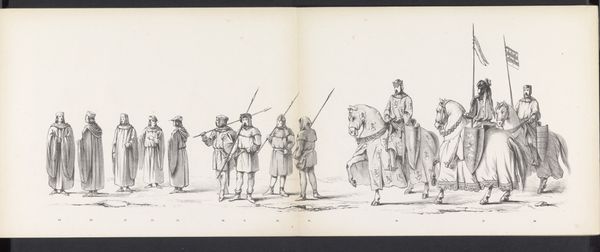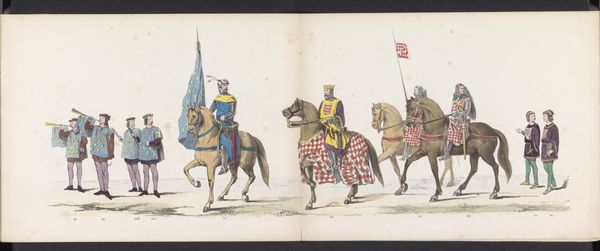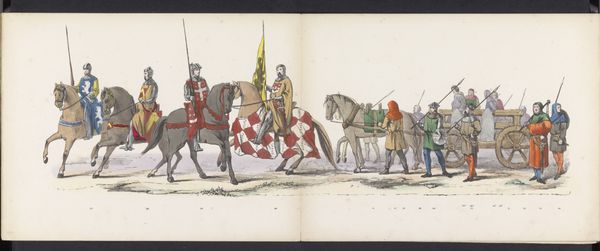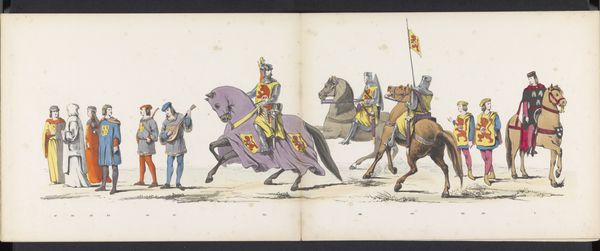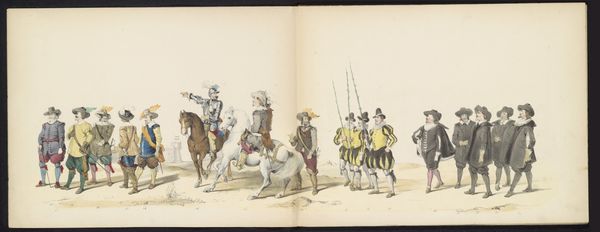
Maskerade van de Leidse studenten, 1865 (plaat 3) 1865
0:00
0:00
print, watercolor
#
medieval
# print
#
figuration
#
watercolor
#
watercolour illustration
#
genre-painting
#
history-painting
Dimensions: height 275 mm, width 720 mm
Copyright: Rijks Museum: Open Domain
Curator: Looking at this watercolour illustration from 1865 titled "Maskerade van de Leidse studenten, 1865 (plaat 3)" by Jan Daniël Cornelis Carel Willem baron de Constant Rebecque, it certainly captures a theatrical, almost medieval scene. Editor: It has an air of historical re-enactment about it. The figures seem consciously staged, hinting at perhaps power dynamics or some sort of hierarchy. What draws your attention most about its materiality? Curator: The artist has rendered the different fabrics, from the heavy robes to the patterned horse blankets with impressive care. I find myself drawn to the materiality of these constructed identities. Notice the textures, the way light falls. It brings up questions of consumption, labour, and social distinction, as they are physically manifested. The artist seems preoccupied with these constructed identities and their associated status. Editor: Indeed. The layering of costumes and their colors also suggests something deeper, maybe allegorical commentary of society. These Leiden students and the ways in which they perform historical garb seem laden with symbolism. This parade reflects the intersection of identity, gender, race, and politics of 19th century Dutch culture, doesn't it? I want to investigate whose narratives are being highlighted here. Curator: It certainly prompts many considerations on the performance of identity and social roles through garments and pageantry. We have people standing as markers of this culture while we look at its representation through watercolour illustration. Editor: It really forces us to ask ourselves: what stories are being retold, and who has access to history? Curator: And equally important, how does this relate to our culture of fashion and costuming? What has remained and changed? Editor: These questions push us towards the broader intersections and contexts of performance, presentation, power and visual markers of difference across various fields and studies. Curator: Looking again through its medium and craftsmanship, it serves both as a window into its culture, and something we must be critical of as viewers ourselves. Editor: It provides that fascinating space for interrogation between the past, present and our possible futures.
Comments
No comments
Be the first to comment and join the conversation on the ultimate creative platform.
